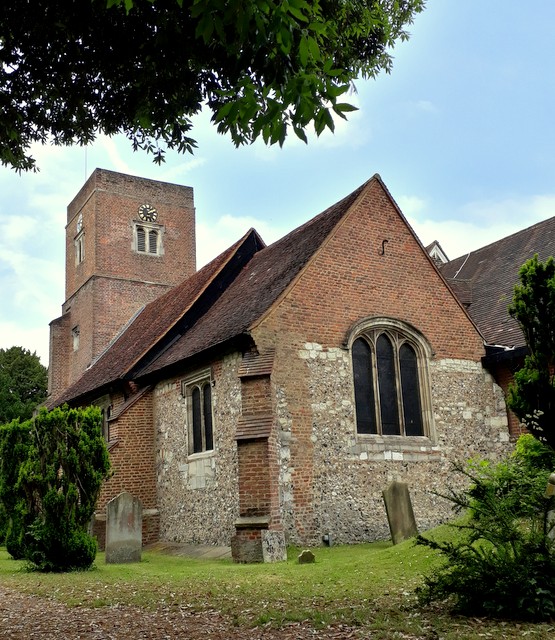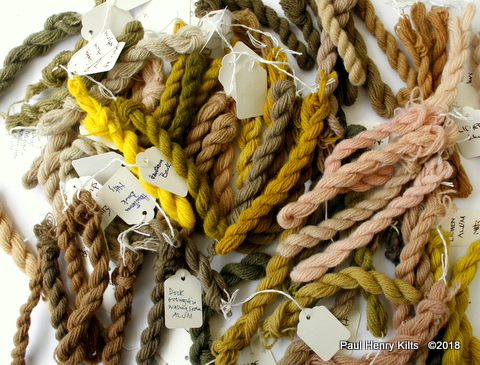A year ago I saw some references to avocados giving a delicate pink colour without the use of any additional mordants, relying on the tannin contained within the stone or skins, I was fascinated and shortly gave it a test. There were several methods advocated , generally long soaks in water and ammonia mixes perhaps for several months, or long simmering at low temperatures. I tried a few tests and was a bit disappointed with the results, pale pinks but nothing that I thought I couldn’t have got with a little bit of exhaust cochineal, so the idea of using avocados didn’t last.
Fast forward about 9 months and I found an old large jar filled with avocado bits and rather dark red liquid, so certainly worth using with some yarn. I made two small skeins of shetland wool, one alum mordanted and the other untreated, soaked them and pushed them into the jar making sure they were well covered and left them overnight, and indeed for a few days. The liquid didn’t feel soapy so I didn’t think there was much alkali left, but I didn’t check the pH.
By chance it was tricolore salad for supper, so I saved the skins and pits , washed to remove any flesh, smashed the pits, let them dry and the next day very slowly simmered them for about 8 hours or so, topping up with water as needed, and pleased to see a very strong colour appearing, almost as much as the 9 month jar.
Another day passed and tests in the simmered dye bath proved positive for a good strong colour, and when put alongside the fermented bath showed a lot of similarities on the un mordanted skein , but the alum one was a much stronger colour – not so much pink as a light brick red ( on the right of the picture)
With this revelation I decided it was certainly worth using the avocados for a little more research.


